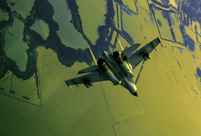 Ceremony volunteers for Youth Olympics make public appearance
Ceremony volunteers for Youth Olympics make public appearance
 A glimpse of female crew of Liaoning aircraft carrier
A glimpse of female crew of Liaoning aircraft carrier
 Stills from "Dad, where are we going?"
Stills from "Dad, where are we going?"
 Legless man's happy life
Legless man's happy life
 Top ten most beautiful islands in China
Top ten most beautiful islands in China
 Aerial view of Hong Kong
Aerial view of Hong Kong
 Happy life in Xinjiang
Happy life in Xinjiang
 2014 China Hainan Int'l Automotive Exhibition kicks off
2014 China Hainan Int'l Automotive Exhibition kicks off
 Collection of 'China Dream' public-spirited ads
Collection of 'China Dream' public-spirited ads
 The silent holy stones
The silent holy stones
The Malaysian flight MH17 with 283 passengers and 15 crew members on board crashed Thursday in Ukraine near the Ukraine-Russia border. It has been confirmed that nobody in the flight survived the accident. U.S. officials told media that they have concluded that the plane was shot down by a missile. We couldn't help but ask what could happen to the flight and what kind of situation the passengers could face between the aircraft was shot and it finally touching the ground.
A Ph.D. in physics from Beijing Normal University described to us several possible situations.
The first possibility is instant disintegration.
The second possibility would be, if we assume that the plane had partly disintegrated in the air, passengers losing consciousness the moment they were thrown out of the cabin. Within the few minutes from high-altitude to the ground, most passengers would remain unconscious. It is because at an altitude of more than 9000 meters, air pressure is only 30% of that close to the ground. If people were suddenly thrown out from the originally sealed and pressurized cabin, they would not be able to breathe. Moreover, the air within the human body would flow outward due to the pressure loss. People would instantly faint.
If the plane was hit in part and the cabin remained relatively complete, passengers would experience no g-force as they rapidly fall from the air. In that case, they may feel very uncomfortable. Data shows that people feeling weightless may sweat and vomit like they are suffering seasickness. Their cardiovascular system may also go through changes during the process.
This article is edited and translated from 飛機(jī)被擊中到墜毀,可能發(fā)生什么?Source: Beijing News
 Moms on their kid’s coming out
Moms on their kid’s coming out Chinese fighters through lens
Chinese fighters through lens
 Children attend gymnastics training in summer
Children attend gymnastics training in summer
 Beautiful sceneries along the special travel route in Xinjiang
Beautiful sceneries along the special travel route in Xinjiang
 Beauty SWAT member in Xinjiang sparks online frenzy
Beauty SWAT member in Xinjiang sparks online frenzy
 Germany beat Argentina 1-0 to win World Cup
Germany beat Argentina 1-0 to win World Cup
 National fitness team members integrate traditional and modern beauty
National fitness team members integrate traditional and modern beauty Collection of 'China Dream' public-spirited ads
Collection of 'China Dream' public-spirited ads  How Chinese men kill the time when their wives practice square dancing?
How Chinese men kill the time when their wives practice square dancing? Top 10 most beautiful islands in China
Top 10 most beautiful islands in China
 Zhou Xun announces engagement to Archie Gao
Zhou Xun announces engagement to Archie Gao
 Photos of the Week
(July 6 - July 12)
Photos of the Week
(July 6 - July 12)
 'Super moon' seen in Beijing
'Super moon' seen in Beijing
 One-legged women with high heel goes viral on Internet
One-legged women with high heel goes viral on Internet China's largest 3D printer builds 2-meter-long boat
China's largest 3D printer builds 2-meter-long boat
Day|Week|Month